
Developed Anamorphic Lens in 1958

Cirkino System (360degree filming/display system) for Science and Engineering Museum in 1964

Tokyo Olympic Games for JOC/MOE, 1964
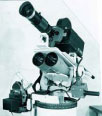
Photo-Optical Rocket Tracking System for Institute of Astronautical Science, University of Tokyo 1965

F-104 Radarscope Recording System for JDA 1965

Visual Display System for Locomotive Simulator for Human Factor Engineering Laboratory, Japan National Railways 1968
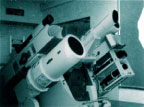
Semi Automatic Film Image Target Tracking System for Tokyo University, 1968
Image Capture / Tracking System for Science and Technology Agency (NASDA Tanegashima Space Center), 1969
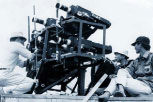
Large Format Multi-Camera System for World Exposition, Japan Pavilion for MITI and Others, 1970
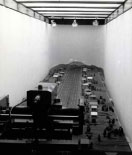
Visual Display System for Highway Driving Simulator for MITI (picture), 1974 High Speed Photo Instrumentation System for Gifu Test Range, JDA, 1974 LANDSAT Image Processing System in Ground Station for Japan Meteorological Agency, 1975 Tank Visual Simulator for JDA, 1976
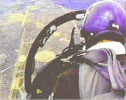
In 1979, nac developed a tape recorder for airborne applications. The compact, ruggedized design of this recorder was qualified in accordance with MIL-STD-810 and it was allowed to be installed on variety of high performance fighter aircraft for mission recording.
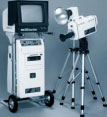
In 1980, nac introduced the first High Speed Video Camera System capable of recording minutes of recorded data on commercially available VHS videotape, the HSV- 200.

In 1983, nac introduced the first High Speed Video Camera System capable of recording minutes of recorded data on commercially available VHS videotape that was ruggedized in design and built in response to demands from the military range market.
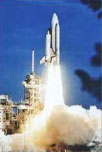
In 1984, the nac airborne recorder was used on the space shuttle to record material processing techniques under zero gravity conditions.

In 1985, nac designed and built the first High Speed Video Camera System for demanding airborne applications.
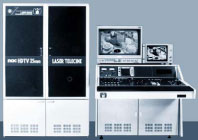
Tsukuba Science Exposition – High Definition TV/Film Transfer System for the Science and Technology Agency and NHK, 1985.
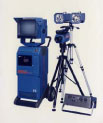
In 1990, nac dramatically increased the recording speed available from HSV systems and introduced the first High Speed Video Camera System capable of recording minutes of image data on commercially available S-VHS videotape, the HSV-1000.
Also with the HSV-1000, nac broke new ground providing the first ever high speed camera system making use of CMOS sensors (it used four).

The first color digital high speed video camera system available in the world was the Memrecam Ci from nac. It was introduced in 1994.
The Memrecam Ci was the first digital video camera system to make use of CMOS-based sensor technology.
The Memrecam Ci was the first digital video camera system to make use of CMOS-based sensor technology.

The first tethered-head digital high speed video camera system available in the world was the Memrecam Ci/RX2 from nac. It was designed for automotive crash test applications and was introduced in 1997.
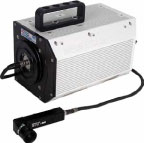
The Memrecam Ci Micro digital high speed camera system, introduced by nac in 2000, was the first Hi-G camera system available in the world that made use of the very small micro camera head. This system was developed for automotive crash test applications where cameras had to be placed in confined spaces.

The Memrecam fx family of digital high speed camera systems was first introduced in 2001. Since this family of products was to be focused on provide mega pixel resolution at 1000fps, nac had identified that data download speed (to the PC) would be critical. As a result, nac implemented the use of the SCSI-replacement technology, Fibre Channel, with the Memrecam fx cameras. nac was the first in the world to use this technology for digital high speed video cameras.

The Memrecam fx RX3 and Memrecam fx RX4 were first introduced by nac in 2002. These cameras were the first available in the world that provided mega pixel resolution at 1000fps while at the same time offering a tethered head.
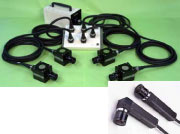
The Memrecam fx RX5 was first introduced by nac in 2003 and it was the first camera system of its kind in the world. While providing mega pixel resolution at 1000fps in a single camera head configuration, the Memrecam fx RX5 is also able to support multiple camera heads for a variety of demanding, Hi-G applications.

The Memrecam fx family of digital high speed camera systems was first introduced in 2001. In 2003, the capabilities of the entire family (the K3, K3R, 6000, RX6, RX3, RX4 and the RX5 ) were expanded by the introduction of high density memory options up to 16GB. nac was the first manufacturer of digital high speed camera systems to implement these high density memory options which provided customers with the ability to record digital imagery for an extremely long time.

A modified version of the Memrecam fx K3, the nac fx Cam was the first digital high speed camera operating at the HDTV standard 720p which was seamlessly integrated into a live television sports broadcast. This feat was accomplished in 2003 by ARRI Media of the UK.
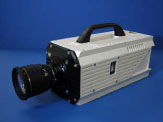
The result of years of product development, the Memrecam
fx K4 was introduced in 2004 and is the first digital high speed camera in the world to employ an ultra light sensitive image sensor.
Due to its unique sensor design, the color version of the Memrecam fx K4 has an ISO rating of 8000 and the monochrome version of the Memrecam fx K4 has
an ISO rating of 32000.
The Memrecam Hi-Motion is a 3-chip digital high speed video camera system providing 300fps in color with a resolution of 1920 X 1080 pixels first introduced in 2005. The camera first made its television debut in Europe at the 2006 World Cup where the images captured by the camera were impressive. The Hi-Motion has also been used in live television sports broadcasts in the USA where it has been “cut in” as a live video camera, in addition to having been used as a special slow motion camera.
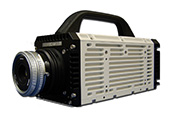
nac introduces the 2nd generation of Memrecam – the GX Series: 2007
NAC received the Emmy Award from the National Academy of Television Arts and Sciences for the 2009/2010 Technical Engineering Awards in: 2010
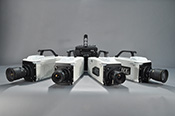
Memrecam HX Series makes its debut in: 2011
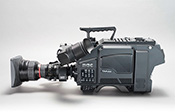
Hi-Motion II, the second generation of the High Motion Broadcast camera is introduced in 2012
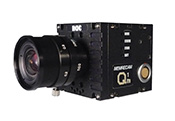
nac introduces the Memrecam Q series – the world’s smallest, self contained, high performance Hi-G cameras in 2014
Total 38 sets of Hi-Motion II are used at the most famous sports event in: 2016
The world fastest – 1-billion frame per second Ultra High Speed Camera, ULTRANAC Tau is introduced in: 2017
nac introduces the world first 40Gpixel/sec Digital High Speed Video Camera, Memrecam ACS-1 in: 2018
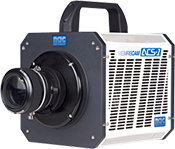
nac announces the first 60Gpixel/sec Digital High Speed Video Camera, Memrecam ACS-1 M60, which provides 1-mega pixel images at incredible 60,000fps (100,000fps in the boost mode) in: 2019


